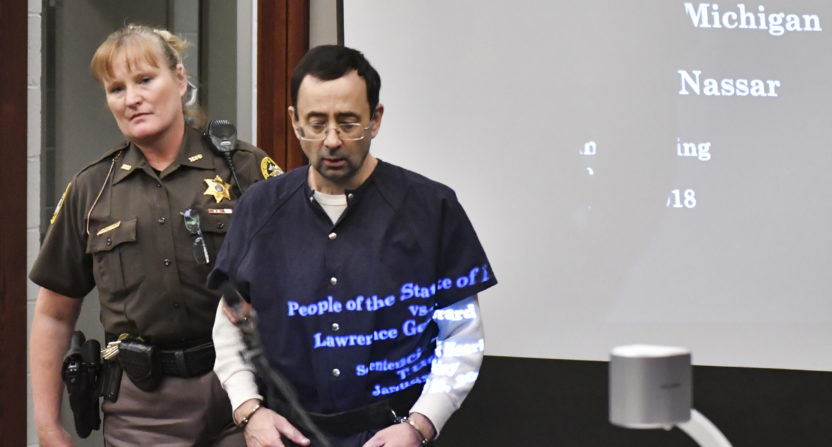It’s staggering that even when it seems impossible to be more horrified and more angered by revelations about how the Larry Nassar case was handled, new information always seems to find a way to make it worse.
That’s true of today’s report from The New York Times, which revealed that the FBI was informed of accusations against Nassar nearly a year before the Indianapolis Star report that brought the accusations into the realm of public knowledge. In the interim, more gymnasts were treated and abused by Nassar. The timeline is interesting, and it’s important to note that none of it absolves U.S.A. Gymnastics from blame or responsibility:
U.S.A. Gymnastics eventually retained what it called “an experienced female investigator” — a specialist in workplace harassment. After completing her interviews, the investigator recommended on Friday, July 24, that Dr. Nassar be reported to law enforcement.
Ms. Nichols and Ms. Raisman competed the next day at the U.S. Classic in Chicago. Gina Nichols said that she saw Mr. Penny at the event and that he told her: We’re working on this. Keep it quiet.
On Monday, July 27, gymnastics officials contacted the F.B.I. in Indianapolis, where U.S.A. Gymnastics has its headquarters. The next day, its chairman, Paul Parilla, and its president, Mr. Penny, met with F.B.I. agents who, they later said, assured them they had come to the right place. Forty-one days had passed since U.S.A. Gymnastics first received the report of the sexual abuse of one of its charges.
The piece on the whole is, as with most things Nassar-related, incredibly difficult to read. There are plenty of details regarding the abuses themselves, including how Nassar would sometimes molest children with their parents in the room, under the guise of medical treatment. And there are certainly frustrating notes with regards to the speed of the FBI investigation, which sputtered amidst questions of jurisdiction and venue, as federal investigations often do.
There are also examples of how certain federal agents, once the investigation shifted, ended up doing quite a bit of good work on the case.
But the whole thing is worth reading if only to try to learn more about what to do if you ever find yourself in a situation that requires timely reporting of suspicious behavior, how to follow up, and how to make sure other people don’t get hurt in the meantime.
In recent weeks, a communal catharsis has played out, as dozens and dozens of empowered victims or their proxies have confronted the doctor at sentencing hearings. The angry but resolute words of Aly Raisman and McKayla Maroney and Maggie Nichols have echoed in the courtrooms of Michigan.
So, too, have the words of the lesser-known accusers, those girls and young women who report they were abused in the year after allegations were first presented to the F.B.I. in Indianapolis: the likes of Alexis Alvarado and Hannah Morrow — and Emma Ann Miller, who in November turned 15.
Because that should never happen.
[NYT]






